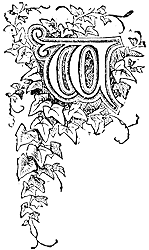 |

ILLIAM kept his vow, and Battle Abbey was built by him the next year. He is said to have offered on its altar his sword and the royal robe worn at his coronation.
A dreadful superstition hung about the spot. A sangulac, as the Normans called it, or fountain of blood, was said to spring up here after every shower of rain, in token of God's anger at the immense outpouring of Christian blood on that fatal field; and men were thankful when a religious house rose on the spot, and banished it. The abbey was very magnificent, and had great privileges granted to it. Amongst these was one resembling that of the vestal virgins of Rome. If the Abbot of Battle met casually any culprit going to execution, he had the power of pardoning him on the spot.
He (the Abbot) was privileged to sit in Parliament, and the land for three miles round the Abbey was bestowed on the brethren.
At the Dissolution the Abbey was granted to a person named Gilmer, who, after pulling down many of the buildings, sold the estate to Sir Anthony Browne, whose descendants used part of the Abbey as a dwelling.
The Websters purchased the estate of Anthony Browne, Viscount Montague, and enlarged and improved the house The hall remained perfect, and part of the cloisters formed a charming room of Lady Webster's. The house stands on a gentle rise, bounded by woody hills on three sides; in the front is a valley winding away towards Hastings. The grand entrance gateway is now the most perfect part remaining; it is square and embattled, and has octagonal towers at each angle. In front are pointed arches and pilasters. The roof was destroyed. The Abbey Church has also been destroyed, but parts of the cloister arches remain, and the ruins of the monks' refectory, with a detached hall, in which it is supposed the tenants of the Abbey were entertained. The hall has some long pointed windows, twelve on one side and six on the other; below is a crypt with pillars and arches.
It was formerly believed that the monks of Battle Abbey possessed a roll or list of all the persons who accompanied William to England; the roll having been given them that they might pray for the souls of the slain. It was also said to contain a list of the families who came over after William's conquest, and settled in the country.
It is now thought (indeed Camden asserts) that the roll existing in his time was forged, and that the names inserted were not in Doomsday Book.
It is probable, nevertheless, that a list of the slain may have been given to the Benedictines for use in their masses, but if so, it has long been lost.
There is a tradition that the original roll, compiled by the monks of Battle, hung in their Abbey beneath some Latin verses, of which a translation was formerly inscribed on a tablet in Battle Church; they ran thus:-
The Abbey, always inhabited by families of distinction, is now the property of the Duke of Cleveland.
|
 |